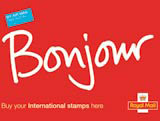Special delivery
Richard Clayton finds out how Royal Mail marketing head Paul Troy is hoping to turn the nation’s postmen and women into ambassadors for the brand

Paul Troy, amateur tennis player and Royal Mail marketing director, aligns himself strongly with the high-profile ‘turnaround team’ that’s forcing the ‘understated’ postal brand to raise its game.
He hired Wolff Olins earlier this summer to come up with a ‘big idea’ that would be ‘not wanting to reinvent the Royal Mail logo, but setting down clear strategic direction [as] a rally cry for the business, internally and externally’ (DW 12 June). And Troy speaks of giving Royal Mail’s ‘150 000 frontline staff’ – the local postie to you and me – a ‘mantra’, something as clear-cut and customer-focused as Tesco’s Every Little Helps.
It’s an approach no doubt applauded by ex-Asda boss Allan Leighton and former Football Association supremo Adam Crozier, who are driving forward the Royal Mail’s change agenda. The next couple of months, however, will severely test the thesis that you can run a soon-to-be-deregulated national monopoly more like a supermarket.
Postal workers are expected to vote in favour of strike action on 17 September in a dispute over pay and productivity. Such are the sticky issues the company must have licked before its grand designs gain the stamp of approval. Less a case of new- fangled brand management than old-fashioned industrial relations.
But if Troy faces a tricky fourth set – in tennis terms – selling Wolff Olins’ scheme to the workforce, he’s experienced enough to recognise that staff really do make the difference.
‘If ever you looked at a service brand that’s powered by people, it’s got to be us. While [middle] management needs to be sharper, the frontline people in this business have always delivered,’ he says, no pun intended, perhaps with an eye on solidarity.
‘The days of big change programmes are over,’ he continues, having worked on similar initiatives at Lloyds TSB. ‘It’s about getting people behind the idea, making sure they’re clear about what they can do differently – because if they [aren’t] how do they do something or improve on it for customers? Then you’re not going anywhere, you know, you’re just issuing bits of paper or playing around the margin.’
Royal Mail’s problem, clearly, is a human one before it is a visual one. As an infrastructure-type business – ‘The Real Network’ to use its recent advertising slogan – you often don’t notice it until things go wrong.
‘The brand furniture here isn’t about designing a logo, it’s how do you bring a brand to life,’ says Troy, his accent midway between Diarmuid Gavin and Neil Tennant.
‘Royal Mail, the company, is taken for granted. [Yet] it’s one of the few service brands I know where the reality is much better than the perception. If you’re a company that gets 82 million promises delivered you make [the brand] happen every day. But does anyone actually stop to think how on earth does that happen?’ he says.
Well, not until the cheque goes missing, no. And consumer group Postwatch points out about a million first class letters still fail to arrive at their destinations next day.
‘For the price you’re looking at, it’s a fantastic service,’ Troy retorts, observing that consumers will not ‘realise how good Royal Mail is’ until after full competition is underway in 2007.
He adds, ‘The new line for our business will be much more of a customer promise that will be delivered by our people.’
The prospect of real competition has motivated the ‘integration’ of Royal Mail’s marketing functions and the appointment of the Omnicom consortium – in which Wolff Olins was the ‘strategic partner’ – to take custodianship of the brand.
‘For the first time we have a unique opportunity to effectively market one brand and that wasn’t the case previously,’ Troy says, adding that only Omnicom truly answered his ‘integrated’ brief.
‘I’ve been around town a lot and I think [consultancies] need to do more work in offering clients that kind of total solution. [Most] don’t actually set themselves up to solve your client problem,’ he explains.
The slimming down of Royal Mail’s tactical design roster followed. Only Carter Wong Tomlin, The Open Agency, Start, Bristol-based Bi-Design and The Design Group in Poole remain. Their work will flow from the template Wolff Olins developed, though it’s not ‘a boring brand book’, Troy insists.
‘When you get a piece of communication, there’ll be a certain look and feel that is distinctly Royal Mail,’ he says. ‘Royal Mail is one of the most powerful brands in the UK, but it hasn’t been leveraged properly yet. We’re in touch with everybody, every day, in person, but emotionally as a brand we haven’t had that same connection.’
Nevertheless, the fortunes of this huge part-public, part-private entity won’t stand or fall on a snazzy new mail-shot. The challenge, as Troy sees it, is ‘brand in action’ or ‘delivering on the values that you put forward’.
Ensuring legions of postmen and women deliver that added value is the biggest task of his impressively varied career. And though Troy sheepishly says he’s ‘one of these brand bunnies’ who obsess over other companies’ marketing, I reckon he’s got more steel than that bloke at his gym. Tim Henman, he’s called.
Paul Troy’s CV
Education Business degree: marketing major
June 2001-present Head of brand marketing, Royal Mail – joined as brand and communications director
Previous jobs Brand director, Lloyds TSB; European brand director, Cadbury Schweppes; Brand manager, Allied Domecq; Marketing manager, Weetabix; Lucozade brand manager, Smithkline Beecham
-
Post a comment




